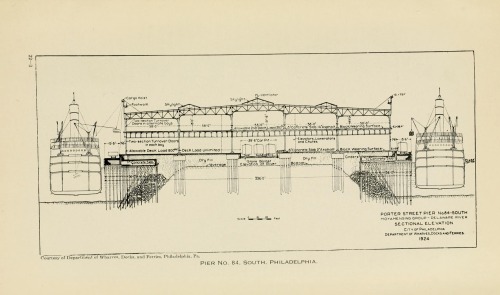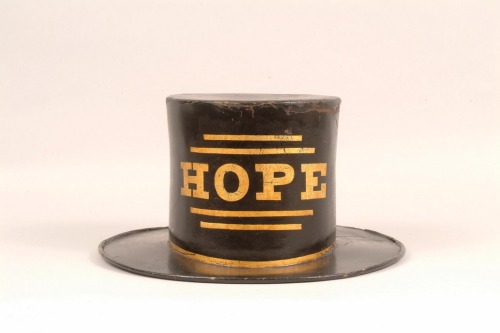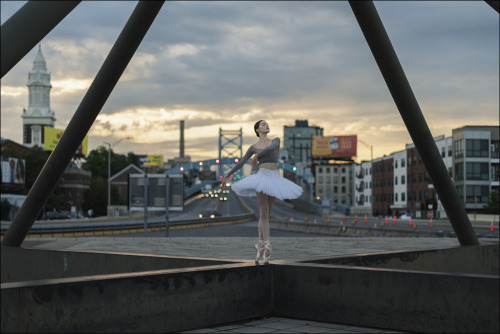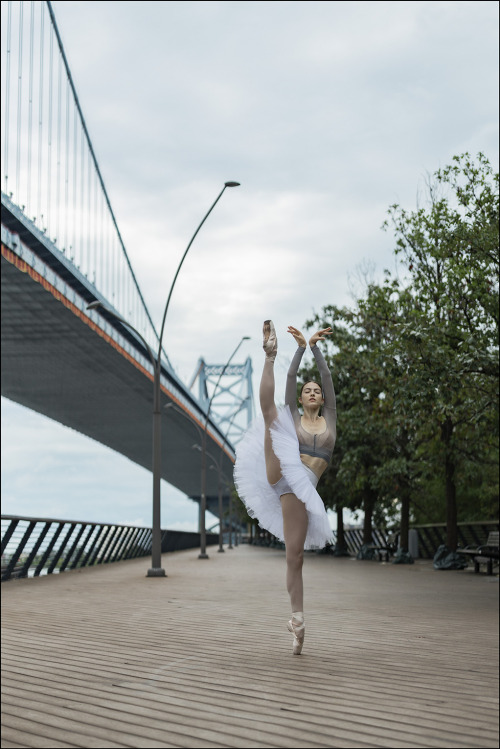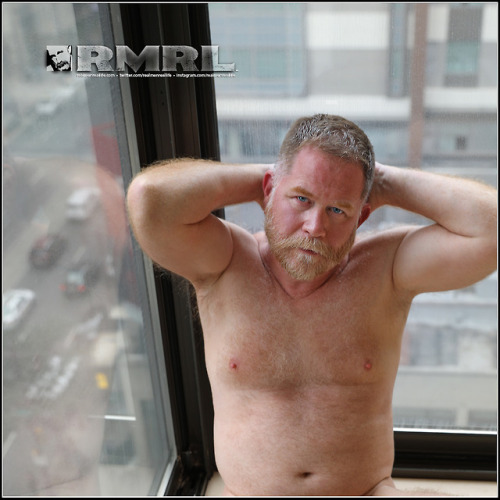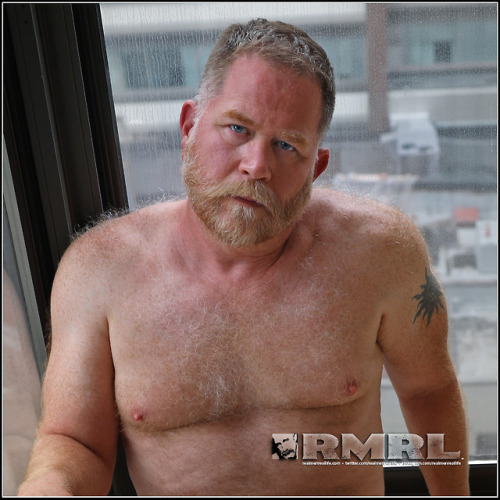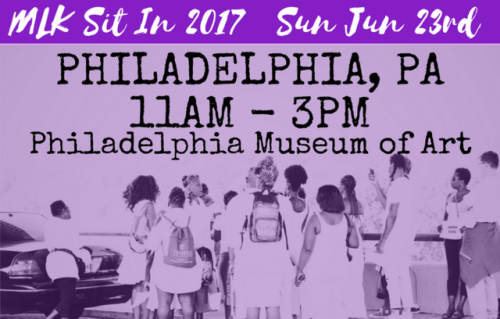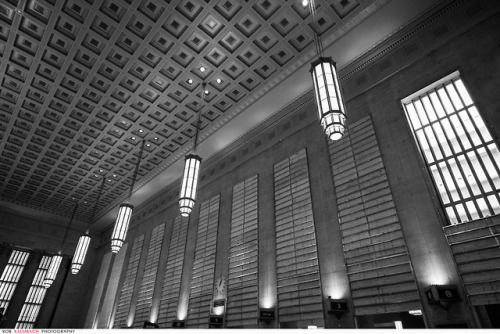#philadelphia
Centennial National Bank
Interior of the Frank Furness designed Centennial National Bank building, currently used by Drexel University as the Paul Peck Center.
Post link
Philadelphia Soccer in 1913-1914
SOCCER FOOT BALL IN PHILADELPHIA. By Oliver Hemingway, Philadelphia, Pa.
The Allied American Foot Ball Association of Philadelphia again proved during the season of 1913-1914 that amateur soccer can be run and played better than by professionals, in and around Philadelphia. The association had a membership of thirty-five clubs, some of which only organized after the playing season had started. These clubs became affiliated members.
The season was an eventful one. First and foremost was the fact that one of the allied members, Bethlehem, won the American Foot Ball Association Cup, the first time that any allied club played in that competition. Its tie games caused replays, which completely upset the Allied schedule, and it was necessary to close the season with two first division games unplayed. Bethlehem had to compete seven times to win the last three games in the cup competition.
In the various cup competitions, in which the Allied teams took part. I have already mentioned the American Cup contest which was won by the Bethlehem. I will now take up the National Cup competition, which was conducted by the United States Foot Ball Association. Five clubs from the Allied entered, namely. Kensington. Bethlehem, Disston. West Philadelphia and Peabody. In the first round Bethlehem defeated Disston, 7-0, at Bethlehem, while Kensington won by forfeit from Tacony, owing to a misunderstanding, Taconv playing an American Cup game the same date. West Philadelphia and Peabody drew byes. In the second round, West Philadelphia defeated Kensington, 4-0 ; Bethlehem traveled to Braddock in Western Pennsylvania and won out in extra time ; Peabody defeated Wissinoming of the Pennsylvania League, 3-0, after a drawn game. 1-1.
The third round found three Allied clubs still left in the race. Bethlehem met its Waterloo at Brooklyn, losing by a penalty goal to nothing. West Philadelphia went to New Bedford, Mass., and played in a downpour of rain, the New Bedford men proving victorious. Peabody was drawn at home with the St. George F.C. of New York. The Saints made the trip to Philadelphia, but the weather was so bad that the referee refused to allow the game to be played and the St. George F.C. forfeited as it could not get a team together to make the second trip. This left Peabody the only allied club to reach the fourth round, and by a peculiar coincidence, it was drawn against New Bedford, the team that knocked out West Philadelphia in the third round. The game was drawn to be played in Philadelphia, but for a consideration, Peabody agreed to stage the game in New Bedford, on March 28. It was well contested, but the Peabody players failed to take advantage of their opportunities and New Bedford qualified for the semi-final.
The Allied Amateur Cup competition, which is run by the Allied Association, drew eighteen entries. All of the byes were given in the first round, only two games being necessary to bring the number clown to sixteen clubs. The draw brought Reading and Allegheny together, the former winning, 9-0, and Kensington defeated Atlantic, 10-3.
The results of the second round were as follows : Manchester Unity 2, Audubon 0, after a drawn game ; Philadelphia Electric 5. Reading 2 ; Putnam 4, Smith ; Bethlehem 9, Centenary ; West Philadelphia 11. Windsor 0. The surprise of the series was the Wanderers defeat of Peabody, 7-1. This game was played on a snow-covered field. Linwood Hibernians defeated Fairhill, 3-1, and Kensington sprung a little surprise by defeating Falls, 2-1. The third round resulted as follows : Philadelphia Electrics 5, Manchester Unity 1 : Bethlehem 3, Putnam ; West Philadelphia 3, Wanderers, 2 ; Linwood Hibernians 6. Kensington 1. In the semi-final. West Philadelphia defeated Linwood Hibernians, 2-1, and the Philadelphia Electrics forfeited to Bethlehem. The date for the final game was fixed for May 3, but Bethlehem was ordered to replay its American Cup game on May 4. and Bethlehem was granted its request to postpone the Allied Cup game. When the contest was rescheduled, West Philadelphia refused to play, claiming that the game should not have been postponed from May 3. Bethlehem was finally declared the winner by forfeit. _____________________________________________________
AMERICAN LEAGUE OF ASSOCIATION FOOT BALL CLUBS.
By E. M. Jones Philadelphia, Pa
The American League of Association Foot Ball clubs concluded its second successful season, with the championship going to the Philadelphia Electrics, better known locally as the “Live Wires.” who went through the season without a single defeat. The runner-up was the strong Cardington A.C., from Delaware County, former champion of the Allied American Foot Ball Association of Philadelphia. It was closely trailed by the Boys’ Club, last year’s champion ; Victor Athletics, a newly organized club ; Rangers Field Club, composed chiefly of Scottish-American players ; Frankford Boys’ Club, champion of the United League last season, and Whitehall Rovers, runners-up of the United League for 1912-13, who had been advanced into the senior league. Won, Lost. Drawn. For. Against. Points. _____________________________________________________
UNITED LEAGUE OF ASSOCIATION FOOT BALL CLUBS.
The season of 1913-1914 was a most successful one, and the league has every reason to congratulate itself on the splendid results acquired. _____________________________________________________
BETHLEHEM F. C. OF BETHLEHEM, PENNA.
By H. W. Trend.
Soccer in Bethlehem during the 1913-1914 season was, without doubt, a great success and has come to stay. This was clearly shown by the response the people of Bethlehem gave the local team when they began to realize just what their champions were doing in putting the name of Bethlehem on the Soccer map, and the festivities that were showered upon the team after they won the American Foot Ball Association Cup and Triple Championship. namely : The American Foot Ball Association Cup, Philadelphia-Allied American League (first division), and Philadelphia-Allied Amateur Cup, clearly showed the feeling towards the champions by the public of Bethlehem.
Post link
Hope Hose Company Fire Hat
Philadelphia, PA, c1810-1860
Beginning in the late 18th century, some volunteer fire fighters began to wear hats painted with their company’s name to identify themselves at chaotic fire scenes. During the 19th century, these fire hats became more ornate, as portraits of historical figures, patriotic scenes, allegorical images, or company icons were painted alongside the company’s name, motto, or founding date. Made of pressed felt, these “stove-pipe” hats were primarily used in Philadelphia, but other nearby cities such as Baltimore and Washington adopted them as well. Fire hats were personal items with the owner’s initials often painted on the top of the hat. While these hats were worn at fires, they are more colloquially known as “parade hats.” Fire companies commonly marched in the many parades of the period and these ornate hats contributed to the visual culture of their day. These distinguishing features in a company’s regalia often proclaimed the members’ cultural and political identity as well as their position on contested topics such as work, religion and immigration.
This fire hat was used in the eastern United States during the first half of the 19th century. The hat is painted black overall, with a painting at its center featuring a female figure clothed in a white robe with an anchor at her side and stormy sea behind her. The painting is flanked by red banners with gold trim that read “HOPE/HOSE COMPY” in gold lettering. The back of the hat features the word “HOPE” in large golden letters, with two golden lines above and below. The female figure with anchor is a classical allegorical representation of Hope.
(from:Smithsonian)
Post link
Patent Model for Circular Slide Rule
Invented by John W. Nystrom
This is the patent model for Nystrom’s calculator. The surface is a brass disc that rests on three wooden feet. It has two graduated brass arms, pivoted about a central spindle, which may be clamped to any desired angular separation and rotated together. Glass magnifiers are attached to both arms. A small dial on the top of the central knob can be moved to record rotations of more than one full circle.
There are four unlabeled circles on the calculating rule, here called a, b, c, and d. They go from the outer rim inward. Circle b is divided into 20 equal parts. Subdivisions of these parts are represented by a series of parallel curves extending between the outer rim and circle b. These, in combination with scales marked on the rim of the arms, allow one to measure subdivisions of the distance between equal parts. The outermost circle (a) is a logarithmic scale ranging from 1 to 10 twice. A series of lines between the two outer circles give intermediate values, which are read from the rotating arms. The circle c, just inside b, is divided from 0 to 90 degrees so that the sine of an angle indicated is given on the outer circle a. The parts of the scale are unequal, with the tens value of degrees from 10 to 49 indicated by large digits. The innermost circle d is divided for finding cosines.
Nystrom promoted the device and solicited a manufacturer in the May 17, 1851, issue of Scientific American. By 1852, he offered the device at three price points, $10.00, $15.00, and $20.00. He was likely making the instrument himself. From 1864 to 1887, the Philadelphia firm established by William J. Young sold Nystrom calculators that were probably handcrafted by George Thorsted. It is unlikely that more than one hundred of these devices ever existed.
(from Smithsonian)
Post link
Sydney Dolan - Bolt of Lightning, Philadelphia
Purchase a Ballerina Project limited edition print:https://www.etsy.com/shop/ballerinaproject
TheBallerina Project book is now in stock: http://hyperurl.co/npmghz
Follow the Ballerina Project on InstagramandYoutube
Post link
Sydney Dolan - Race Pier, Philadelphia
Purchase a Ballerina Project limited edition print:https://www.etsy.com/shop/ballerinaproject
TheBallerina Project book is now in stock: http://hyperurl.co/npmghz
Follow the Ballerina Project on InstagramandYoutube
Post link
Sydney Dolan - Graffiti Pier, Philadelphia
Purchase a Ballerina Project limited edition print:https://www.etsy.com/shop/ballerinaproject
TheBallerina Project book is now in stock: http://hyperurl.co/npmghz
Follow the Ballerina Project on InstagramandYoutube
Swimsuit by Norma Kamali:https://normakamali.com
Post link
Garth sat nude in a corner with large open windows. I wondered if I were the only one watching him… ❤️
Post link
Garth was in a sauna. Both of us started to sweat, and I was able to get some nice shots before my lens fogged up.
Post link
#AWITChallenge - Nationwide
https://www.gofundme.com/awitchallenge
Black girls are a storm. Roaring tempests from the moment they come into being. Thunderous and bold. Full of dancing, whirling winds and remarkable energy. Sometimes, they are too much for the world and it will ask them to shrink, to quiet their spirits, and put out their light, but Black girls shine anyway. They amaze me.
Join Sisters in the Storm, for the “A Wrinkle In Time” Challenge - a fundraiser to purchase full theaters in eight U.S. cities so that we can fill the seats with Black girls and non-boys to experience this important film together.
All proceeds will go directly to purchasing full theaters in the following cities:
• Austin, TX
• Charlotte, NC
• Chicago, IL
• Greensboro, NC
• Houston, TX
• Philadelphia, PA
• Plainfield, NJ
• Washington, DC
In late January, a Black girl named Stormiyah Denson-Jackson passed away in an apparent suicide at the public boarding school she attended. She was twelve years old and already madly in love with math and science — a #RealMeg. But this love she had made her the target of bullying and verbal abuse from her classmates. Devastated by their taunts, she chose to end her life rather than live with the shame they tried to make her feel for being a “nerd” who enjoyed engaging with sciences and mathematics.
Seeing ourselves represented as heroes has undeniable power, and feeling our absence in these roles also influences the way that we see ourselves and our Blackness.
We want Black girls to see their Blackness as something to be admired, celebrated, and valued, and we want Black girls interested in STEM not to feel that their Blackness is a barrier to their dreams. We want them to know that they should never have to quiet their storm for the comfort of others. They are not too much for the world and the light they carry has the power to lead many out of darkness.
For Stormiyah and every #RealMeg in our anti-Black world, we want to give the gift of A Wrinkle in Time to as many Black children as we can, and we will center Black girls and other non-boys in this work. Please join us in the A Wrinkle In Time Challenge as we raise funds to purchase full theaters in eight U.S. cities so that we can fill the seats with Black girls and non-boys to experience this important film together. #AWITChallenge
READ THE FULL #AWITChallenge Statement HERE
Post link
#MLKSitIn 2017 - PHILADEPHIA, PA
Sun Jul 23 - 11:00 AM - 3:00 PM
Philadelphia Museum of Art
The 2nd annual MLK Sit In is taking place around the country and we invite you to participate in the event in solidarity.
Please check out MLKSitIn.com to see how the event came to be and why we choose to honor Dr. King’s radical legacy and the efforts of freedom fighters past and present.
Details for this year:
Meeting Time: 11am
Meeting Location: Art Museum “Rocky” steps (meeting) then progress to MLK Drive (adjacent to the museum)
Attire: We ask attendees to wear white for peace
What to bring: This is a “family” gathering, so we ask everyone to bring one of the following–water, juice, fruit, pastries, small food items to share, candy for kids, chips, cups, ice, yogurt etc. Please bring enough for 5-10people.
We also ask, if you feel so inclined, to bring flowers to toss into river to honor ancestors or, if you’re a person of faith, something emblematic of your faith and spirituality. We will have a limited amount on hand.
Our purpose: Gather in a space of joy to honor Dr King’s radical legacy and honor Freedom Fighters from Philadelphia.
We ask that you be on time and respect other people’s commitment to this space.
Order of Events:
Begin silent march at 11:15 (we will walk a few hundred feet along Dr. King Blvd in silene to honor the lives of people lost to state violence and those currently incarcerated as political prisoners)
Pour libations into river at 11:30. Call names of ancestors and freedom fighters.
Recite Dr Kings speech in unison at 11:45
Remarks: 11:55–If you have any words to share, any poetry, a musical dedication, anything to recite, we welcome you to participate at this time.
Move to park space across from art museum by statues to eat and drink and celebrate 12:15-12:30pm or so
Children are welcomed and encouraged to attend. Friends and family in the city are also welcomed.
Post link
In 1924, Colonel J. (John) Victor Dallin (1897-1991) founded the Dallin Aerial Surveys Company. Dallin was a Royal Flying Corps-trained pilot who served in World War One; in the latter stages of the war, he was sent on aerial photography service for reconnaissance missions.
After the war, in 1919, he put that experience to use when joined Bishop and Barker, a firm which did some aerial survey work. In the 1920s, he worked at the Philadelphia Aero Service Corporation, which operated a flying school in South Philadelphia. In 1924, he left to establish his own company and started Dallin Aerial Surveys as a single proprietorship.
Dallin Aerial Surveys produced photographs like this image of Center City Philadelphia, featuring City Hall, which was taken at 5:40 A.M. on June 24, 1934. Its clients included newspapers, businesses, municipalities, and private individuals, who contracted with the company for aerial images of factories, private estates, schools, country clubs, towns, airports, rivers, and newsworthy sites and events.
During its years of operation, the company produced not only oblique photographs of various sites for commercial purposes, but did a considerable amount of aerial photogrammerty (aerial mapping of a city, specifically the city of Philadelphia). In order to carry out his work, Dallin designed several specialized cameras and mounters. A camera used for film negatives in the 1930s had a thirty inch lens so that high vertical views could be made without flying excessively low over urban areas.
The Dallin Aerial Surveys Company closed in 1941, reportedly because he rejoined the armed services for WWII. Today, the company’s photographs live at Hagley Library in our collection of Dallin Aerial Survey Company photographs (Accession 1970.200). Our Digital Archive also more than 7,800 images from the Dallin Aerial Survey Company collection. The majority of the photographs concentrate on the Mid-Atlantic region covering a period from 1924 to 1939. To view the digital collection online now, just click here. To learn more about the Dallin Company and the collection, visit our online exhibit A Bird’s Eye View of the Delaware Valley: The Photography of the Dallin Aerial Survey Company
Post link
A shot I took from inside the Philadelphia Train Station. Always reminds me of the movie “Witness”
Post link
A tiny taste of what they won’t show you in the news. The youth IS the future. Watch us prop him up as he speaks truth to power ✊#blackboyjoy #wildwestphilly #blacklivesmatter #philadelphia (at Malcolm X Park)
https://www.instagram.com/p/CBJevC9pDG-/?igshid=x6mgcimbofyd
Post link


